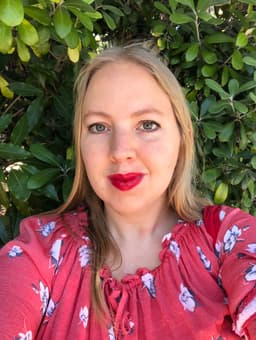Ship first, commit later: Rish Mukherji of Neynar


"FAFO is real," and other insights from building Neynar.
Look, it's simple:
- Bet early on risky platforms with high potential.
- Then validate every product decision through real usage data.
- Build for the current moment, right before it happens.
- Follow developer demand while maintaining focus.
- The short term must lead to the long term.
That's the balancing act of running a crypto startup. In particular, one focused on developer tools, providing the infrastructure to ship powerful products quickly.
"Simple" may or may not be the right word, but "easy" definitely isn't.
Splits interviewed Rishav Mukherji, who cofounded Neynar, the go-to developer platform for building on Farcaster. Before Neynar, Rish spent four years at Coinbase, where he helped launch Base. And before that, Rish worked on Messenger at Facebook. If you go back far enough, he studied computer science.
Why bet your company on Farcaster?
You as a founder have to believe in something that you think is lower-risk than the rest of the market. If the rest of the market believed it was lower-risk, somebody else would have already done it. You have to be ahead of the curve and take that risk. That's your comparative belief advantage.
We were interested in decentralized social and Farcaster had piqued our curiosity for a while, so we decided to follow that passion.
How would you describe Neynar today?
The simplest way to describe us today is as the Farcaster developer platform. We focus on Farcaster at the protocol layer. Within that narrow approach, we have gone both wide and deep.
We serve a lot of different shapes of our product to different people depending on what they're doing. Companies like Zora or Rodeo use the Farcaster graph to enrich their own social graphs. Dune uses us for large data storage and analytics. Soon Coinbase will launch a new version of Coinbase Wallet built using Neynar.
What's your approach to product development?
Ship a minimum viable product, then decide whether it's justified. There's a high failure rate on both our experiments and user requests. We don’t continue to build on a product until we get some post-launch data.
But you also can't decide immediately. Take sign-in with Neynar — it took 3-4 months before anyone was using it, but now it's popular. We keep things around for a while to see if they find their audience.
The fundamentals don't really change. You have to make something that people value.
You've expanded into some onchain services. How do you decide what to build?
We are always looking for developer demand. That's why we added onchain services like Clanker integration. But we have yet to support another protocol besides Farcaster, because the user activity just isn't there. (I'm not saying that we would never support another protocol — but we haven't found the right one at this time.)
We do a mix of both trying our own experiments and listening to our users and offering what they want. First we talk to users, then we evaluate the data.
What is Neynar's business model?
Mostly SaaS, with a mix of transaction revenue. Our onchain services incur onchain fees, which isn't currently a meaningful portion of revenue, but we're experimenting with that direction. We are not a token experimentation company. Of course, others are free to use our APIs to launch tokens and run those experiments!
How has Farcaster evolved since you started building on it?
We've seen many flavors of both the community, the developer tooling, and what people are excited about. At the meta level, it's not super surprising when you think about how long-lived protocols grow. As the technology evolves, the narrative needs to evolve over time — people do different things at different stages.
What stage are we in now?
It's definitely the mini apps wave right now. We're currently seeing a new all-time high of active developers on the platform. Mini apps have helped with user retention because you can come in and do stuff even without having a bunch of friends yet.
Best-case outcome is that Farcaster is what Ethereum is to crypto, but for social. Farcaster started developer-first, getting the nerds excited. Now, in terms of bringing on net-new users, they're doing the work. The Merkle team understands that growing consumer DAUs is a top priority, and there's a lot of work to do to solve that problem.
How big is your team now?
Right now we're 9 full-time people. We've grown a lot in the past six months, after raising our Series A about a year ago.
What keeps you up at night as a founder?
At the very high level: are we focused on the right thing? Is this the best way to grow the company five years, 10 years in the future? Where is the future headed, and are we pointed in the right direction for that? Are we building the right things to capture the next burst of explosive growth?
What's the biggest lesson you've learned as an entrepreneur?
The simplest way to say it is just do things. FAFO is real. There's no point debating — there should be a cap on verbal debating.
If you found this Q&A valuable, follow Rish on Farcaster and/or X.